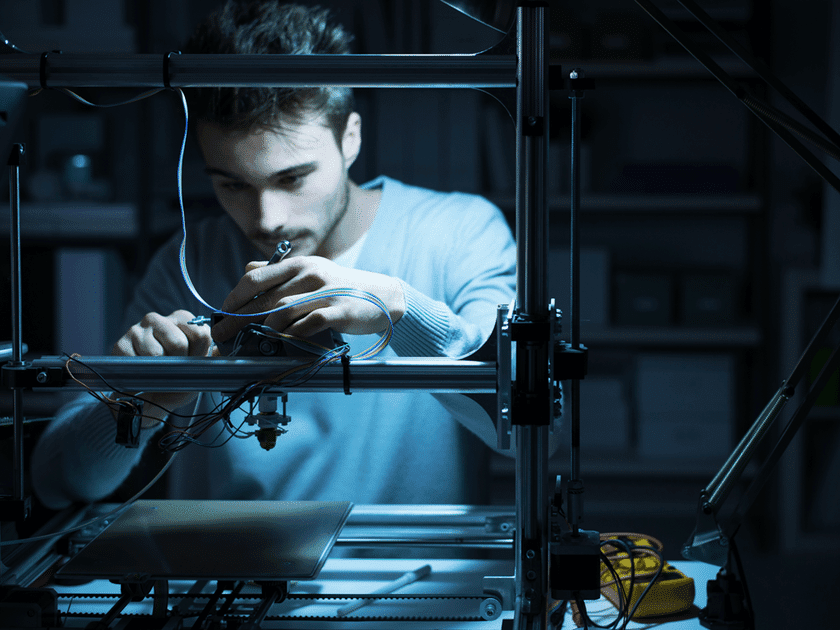[ihc-hide-content ihc_mb_type=”show” ihc_mb_who=”reg” ihc_mb_template=”3″ ]
[vc_row][vc_column][vc_column_text]Soon after that, Canada’s public safety department commissioned a study on ways to prevent the spread of 3D printed guns, while the U.S. Congress banned them outright.
But now, it seems, the RCMP is looking at 3D printing technology with fresh eyes. Last week, the B.C. RCMP issued a government tender for its very own 3D printer, with the aim of building models of vehicle accidents for use in court. It may buy an additional four printers in the next two years.
The printer would be used by the B.C. RCMP’s integrated collision analysis and reconstruction service (ICARS), which specializes in forensic reconstruction of collisions that cause serious injury or death. It would be used in conjunction with the unit’s existing 3D scanning technology, which it uses to create digital images of accidents.[/vc_column_text][vc_single_image image=”2660″ img_size=”full” add_caption=”yes”][vc_column_text]“The use of both technologies will allow ICARS to ‘scan’ and create an exact replica of the scene and the involved vehicles,” a spokesperson said in an email statement. “This will further enhance ICARS’ ability to determine and demonstrate to the courts the angles of vehicles during the collision, which is important in calculating speeds.”
A 3D printer could be used to recreate “the way the car crumpled, the way the buildings were, the way the trees were, and then basically have a scale model for the jury to see,” said Mark Barfoot, managing director of a 3D printing research lab at the University of Waterloo. “It’s a little bit easier for juries to understand than a flat kind of drawing.”
John Biehler, a Vancouver-based 3D printing consultant, said he’s not aware of Canadian law enforcement making much use of the technology to date, but he believes it could gain popularity. “I think once one agency has some success with it, I know like a lot of things, all the other agencies are going to see that,” he said.
Elsewhere in the world, police forces are already making use of 3D printing technology, and not only for auto accident and crime scene reconstruction.
In 2015, a U.K. man was convicted for the murder of his tenant after 3D scanning and printing were used to prove that a charred piece of bone found in his garden matched one of the victim’s limbs found in a suitcase.
Last year, the remains of a woman found in Ohio were identified after a 3D model of her skull was printed and used to reconstruct her facial features. There has even been an attempt to use a 3D printed replica of a murder victim’s fingerprint to unlock his phone.
Barfoot said the FBI can also print replicas of objects in a room under surveillance, equipped with recording devices.
Though Canadian law enforcement has yet to fully embrace 3D printing, various police divisions have picked up 3D scanning technology in recent years. Last August, the RCMP’s forensic laboratory in Ottawa issued a tender for a 3D scanning microscope to analyze bullets discharged from firearms. Manitoba RCMP are also using 3D scanners to recreate accidents and crime scenes.[/vc_column_text][vc_column_text]Barfoot said scanning technology has become more widespread just in the last three to five years. “The biggest benefit from scanning is that if you just take photos of the scene, inherently you’re going to miss something that’s a quarter inch outside of that photo,” Barfoot said. “But you can scan that entire room, say, that a crime happened in, and now you’ve got everything digitally that you can zoom in and look at from your office.”
The new technology could also help police clear accident sites faster, said Mihaela Vlasea, associate research director in the University of Waterloo’s 3D printing research lab.
“A lot of times when you have an accident, you have to shut down an entire street or area or even highway,” she said. “Being able to clean up right away without having to wait for the forensic team to fully draw sketches or take pictures and so on, I think it has a great impact on the public perception of how fast an accident scene is being carefully looked at.”
There are also huge savings, Vlasea said, in having a machine build a replica of a crime scene instead of a person. She said other industries like manufacturing already use 3D printing as a matter of course. “I think even for law enforcement, I think that’s kind of a natural step.”
Eugene Suyu, co-founder and CEO of Tinkerine, a Vancouver-based 3D printing company, said the type of printer the RCMP is looking for would cost about $2,500. “It’s not super expensive,” he said. “It’s what I’d like to consider the professional desktop range of printers.”
He said the RCMP could easily expand the printers’ use beyond auto accidents, either for other types of crime-scene recreation or to build plastic devices like camera mounts.
“I think there’s an application that will probably stick,” he said.[/vc_column_text][/vc_column][/vc_row]
[/ihc-hide-content]


